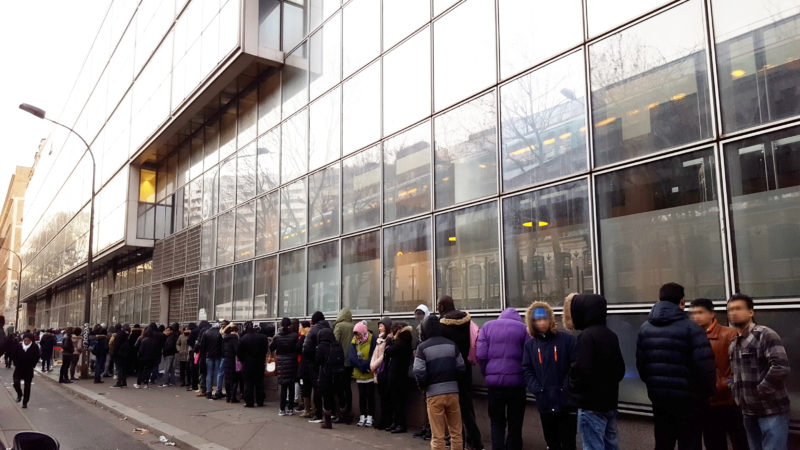Pre-reception systems: asylum seekers face additional complications

While access to asylum was generally handled directly by the authorities tasked with handling application registration and assessment, in 2014 and 2015 various European countries implemented pre-reception systems to cope with the surge in asylum applications. These systems were designed to facilitate access to the procedure, especially during periods of exceptionally high demand. However, from an applicant’s perspective, it delays their entry into the asylum system and can sometimes lead to them being denied or restricted access to the benefits to which they are entitled.
For example, since 2015, the Belgian Office for Foreign Nationals has been issuing a “summon” (convocation in French) to applicants. This “summon” is a letter that includes a reference number and a link to a website, which applicants must check on a daily basis to see whether their number has been called. If their number appears, they must then make their way to the Office to formally submit their application. During this pre-registration phase, asylum seekers are not considered as such and therefore are denied the rights associated with this status. This pre-registration system has been enshrined – although slightly modified due to the introduction of specific time limits – by the new law on decision-making procedures, which came into effect on the 22nd of May 2018.
The situation is quite similar in France. Since 2015, asylum seekers have been required to sign up at a reception platform (PADA), managed by non-profit organizations, before they can make an appointment at the sole asylum application office (GUDA) managed by the local prefecture and immigration office (Ofii). Only after their appointment at the GUDA are they officially registered as asylum seekers, finally allowing them to access material reception conditions – including accommodation. The law states that asylum seekers will have an appointment with the GUDA within 3 to 10 days. In reality, waiting times are often at several weeks or months.
In Germany, asylum seekers also have to go through a pre-reception phase, however, access to reception conditions is ensured during that period. Seeing that it could take up to several weeks or months to get an appointment and officially be registered with the BAMF (Bundesamt für Migration and Flüchtlinge, or the Federal Office for Immigration and Refugees), it was decided that a “reception certificate” be issued by the BAMF – and by initial reception centres, starting in 2016 – to applicants who report to the latter. This certificate provides official proof that applicants are in Germany legally, and allows them to access reception conditions, to which they are entitled (including housing) until they are able to formally submit their request.
Greece and Italy have developed a different approach, one based on hotspots. These hotspots are designed to facilitate the identification of and distinction between asylum seekers and “economic migrants”. These migrants are generally deported, while asylum seekers are redirected to the relevant authorities who will officially register their application. Living conditions in these facilities as well as the inability (in some cases) of asylum seekers to register their application have frequently been criticised by NGOs, leading to the closure of one of the four hotspots in Italy.
Although the number of applications filed in Europe dropped substantially in 2017, these pre-reception systems are still in place throughout the EU.
